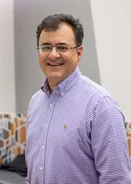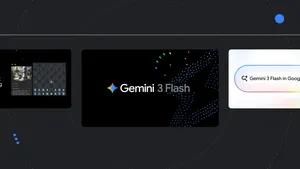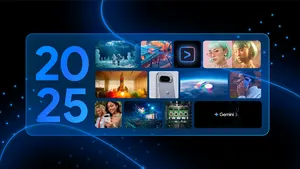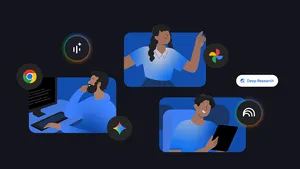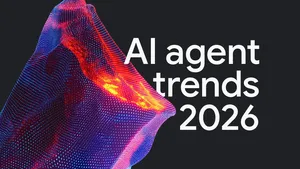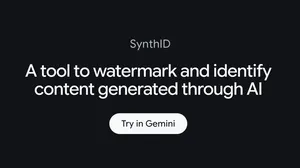Google at the 79th United Nations General Assembly

This week, global leaders are gathering in New York City for the 79th United Nations General Assembly (UNGA) and the first “Summit of the Future.” Front and center is how to dramatically accelerate progress on the UN’s 17 Sustainable Development Goals (SDGs).
To help, the UN took a significant step forward yesterday in adopting the Global Digital Compact, a UN initiative to design a global framework to overcome digital, data and innovation divides. It outlines principles, objectives and actions for advancing an open, free, secure and human-centered digital future that enables the realization of the SDGs.
We believe that linking the SDGs with digital progress is a great step, as we’ve seen first-hand how digital tools and access to technology can benefit education, healthcare, entrepreneurship and economic growth. We’ve long been inspired by the alignment between Google’s mission — to organize the world’s information and make it universally accessible and useful — and the SDGs. They’re similarly audacious goals that seek to benefit humanity.
Most excitingly, AI may now bring them all into reach.
As our CEO Sundar Pichai said in his keynote address at the UN’s Summit of the Future this weekend, “Just as the internet and mobile devices expanded opportunities for people around the world, now AI is poised to accelerate progress at unprecedented scale.”
He also shared some of the ways Google develops technology in an effort to improve the lives of as many people as possible. From investments in infrastructure to digital skills training to innovating new products, we’re focused on making sure the digital divide does not become an AI divide.
Google CEO Sundar Pichai addressing the UN's "Summit of the Future" on September 21, 2023.

Our partnerships to address the SDGs
We know from experience that expanding access to opportunity through technology requires strong public-private partnerships — with bold investments supported by the right policy frameworks. That’s why to address the SDGs and prevent an AI divide we are working across sectors, in concert with the UN and others. Today I’m excited to share a few updates on that work, including ongoing partnerships with UN agencies and a broad array of global stakeholders.
Supporting AI skilling and education through a Global AI Opportunity Fund
As Sundar shared in his keynote address, we’re proudly committing $120 million to make AI education and training available throughout the world. We’re partnering with nonprofit and civil society organizations to provide training in local languages based on foundational AI courses designed by Google and others. This is in addition to $275 million in Google.org funding already committed to support the responsible use of AI in society, funding both NGOs using AI to accelerate their social impact as well as organizations helping to build an ethical, safe and robust AI ecosystem. This also covers support for the development of AI solutions to achieve the SDGs such as flood forecasting in more than 80 countries, wildfire detection, and AlphaFold which is being used by over 2 million scientists in more than 190 countries doing protein-folding research.
Enhancing the “Data Commons” to measure SDG progress
After a successful year since the launch of UN Data Commons for the SDGs, Google has worked with the UN Department of Economic and Social Affairs (UNDESA) Statistics Division to expand Data Commons integration into major organizations like the World Health Organization (WHO) and the International Labor Organization (ILO). Data Commons acts as a central hub, providing an AI interface to access insights and visualizations on SDG progress, ultimately facilitating data-driven strategies and decisions in support of the SDGs. This helps with data equity — eliminating data as a primary barrier to implementing the SDGs — and ensures more communities have the resources they need to benefit from AI advances.
Using AI to map the world’s buildings
With the global population growing by more than 80 million a year, mapping the ever-changing built environment is difficult. But comprehensive urban data is critical to help global decision-makers and partners like UN Habitat support effective urban planning and address SDG 11. Just last week, we launched the Open Buildings 2.5D Temporal dataset, which uses AI to extract building footprints and heights from satellite imagery that is too blurry for the human eye, and provides critical information about how the world’s cities are changing over time with unprecedented detail.
Using AI to enhance humanitarian disaster response
In collaboration with Google.org, UN Global Pulse’s DISHA initiative, and the United Nations Satellite Center (UNOSAT), Google Research delivered an AI-powered solution to assist UNOSAT experts in assessing building damage, significantly enhancing the United Nations’ capacity to respond to global natural disasters. The tool allows UNOSAT analysts to expand their coverage by a factor of seven, allowing them to assess much larger regions in disaster zones, and it speeds up the production of initial damage reports by a factor of six, facilitating faster support to humanitarian agencies.
Leveraging Google Cloud
Google Cloud collaborated with the UN Industrial Development Organization (UNIDO), the UN International Computing Centre (UNICC), and the Italian and Ethiopian governments to co-host an event to address the mounting challenges associated with the upcoming EU Deforestation Regulations. Google Cloud offers modern technology solutions to empower coffee farmers with what we call “first mile data ownership,” providing control of the data to the farmers on the ground and allowing for greater transparency and supply chain efficiency. We also signed a Joint Declaration with UNIDO to leverage innovation to advance inclusive and sustainable industrial development.
Working to enhance education for all
As part of our commitment to learning for all, we’re working with UNICEF to support SDG4 (Quality Education), including deploying Chromebooks and using Google Classroom and Read Along to support literacy development. We are also proud to be a member of UNESCO’s Global Education Coalition, which yesterday launched the Six Pillars for Digital Transformation of Education, a common framework to shape sustainable and human-centered digital transformation of education systems. We know that by safely connecting young people to high-quality learning experiences, we can support skilling, economic development and societal contribution. Our aim is to use the power of technology, including advances in AI, and apply it to help close the equity gap and solve for the global learning crisis.
Looking ahead
We’re proud of our ongoing work with the UN. This year, in particular, we were deeply inspired by the first-ever “Summit of the Future,” which reflected an understanding of the urgent issues facing our world, as well as the role technology can play if we work together.
We already know that future generations are watching, and focused on the urgent need for progress. In fact, this year a group of YouTube Creators from around the world joined UNGA and the summit to amplify these vital conversations with their more than 52 million subscribers. This, in addition to livestreaming UNGA sessions on YouTube, is one more way that people are signaling support for progress on the SDGs.
As Sundar put it, “The opportunities are too great…the challenges too urgent…. and this technology too transformational, to do anything less.”
So let’s do this!
